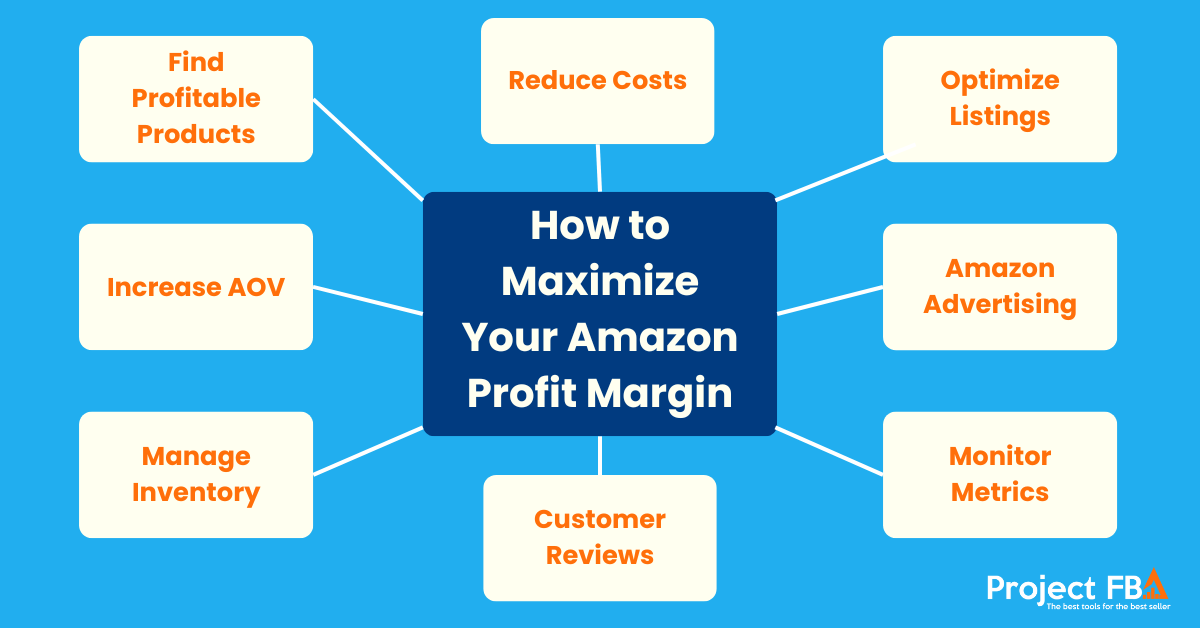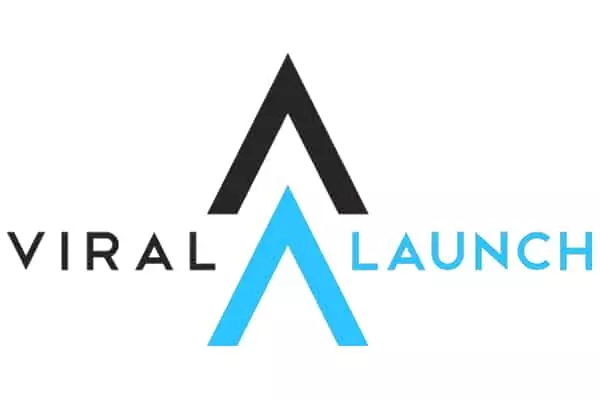Diving into Amazon FBA can be both exciting and challenging for e-commerce entrepreneurs. One key aspect of this business is knowing the answer to this question: What is a good profit margin for Amazon FBA?
After years of selling on Amazon, I’m here to answer that question and show you how to see an Amazon FBA product margin increase. Let’s boost your business earnings!
What is a Good Profit Margin for Amazon FBA?
Generally, a good profit margin for Amazon FBA is between 15% and 20%. A profit margin of 20% or higher is excellent, while one below 5% is likely unsustainable.
According to a recent survey from Jungle Scout, 57% of Amazon sellers see profit margins higher than 10%, and 28% see profit margins above 20%.

I want to advise you not to get too hung up on these numbers. Of course, the higher the profit margin the better. But the exact number that determines a good profit margin for Amazon FBA can vary based on several things, like product category, competition, and operational costs.
The 3x Rule
When considering your Amazon FBA profit margin, you may hear about the 3x rule — it’s the gold standard for those starting out in Amazon FBA selling.
So, what is the 3x rule?
The 3x rule is a simple selling strategy: You should sell your product for three times what you paid to acquire it. For example, if you bought an item for $10, you would then sell it for $30. One-third of that covers the initial cost, one-third covers any fees, and the final third is your profit.
The 3x rule is a great place to start, but you’ll need more sustainability for long-term selling.
How to Calculate Your Amazon FBA Profit Margin
Knowing how to calculate your profit margin is fundamental to understanding your business’s financial health. Here’s a step-by-step guide to help you accurately determine your profit margins.
Step-by-Step Calculation
- Revenue: Start by calculating your total sales revenue.
- Cost of Goods Sold (COGS): Deduct the cost of acquiring or manufacturing your products.
- Amazon Fees: Subtract all Amazon-related fees, including referral and fulfillment fees.
- Advertising Costs: Deduct any expenses related to advertising and promotions.
- Other Expenses: Include costs like shipping, returns, and any other miscellaneous expenses.
The Profit Margin is calculated by subtracting Total Costs from Revenue, dividing the result by Revenue, and multiplying by 100.
The formula to calculate your profit margin is:
Profit Margin = [(Revenue – Total Cost) / Revenue] x 100
Example FBA Profit Margin Calculation
Suppose you sell a product for $50. The breakdown of your costs is as follows:
- COGS: $20
- Amazon Fees: $10
- Advertising Costs: $5
- Other Expenses: $2
Your total costs would be $37. Subtracting this from your revenue ($50) leaves you with a profit of $13.
To calculate the percentage decrease, subtract 37 from 50, then divide by 50, then multiply by 100. This gives you a profit margin of 26%.
26 = [(50 – 37) / 50] x 100
Amazon FBA Profit Margin Calculator
Fortunately you don’t have to bust out the calculator to figure out your Amazon FBA profits. Several Amazon Seller tools can automatically calculate and monitor your Amazon profit margins for you.
Seller software like Jungle Scout, Helium 10 and Viral Launch comes with Amazon FBA calculators and comprehensive analytics that help you stay on top of your business finances and increase profitability. If you’re still in the product research phase, these tools will also tell you which products are worth investing in based on their projected profit margins.
Factors That Influence Amazon Profit Margins
There are several elements that can impact your Amazon FBA profit margins. These include:
- Cost of Goods Sold (COGS): High COGS can significantly eat into your profits.
- Amazon Fees: Fulfillment fees, referral fees, and storage fees need to be accounted for.
- Advertising Costs: Pay-per-click (PPC) campaigns can be costly, but are often necessary for visibility.
- Returns and Refunds: High return rates can negatively affect your bottom line.
Why is Amazon FBA Profit Margin Important to Monitor?
Staying on top of your profit margins is an important part of managing your Amazon business. Here are three reasons why knowing your Amazon FBA profit margin is important for your success as a seller:
Financial Health
Your profit margin is a direct indicator of your business’s financial health. A declining profit margin can signal underlying issues that need immediate attention.
Competitive Edge
In the highly competitive world of Amazon FBA, maintaining a healthy profit margin gives you an edge. It allows you to reinvest in your business, improve your products, and run effective marketing campaigns.
Informed Decision-Making
Regularly monitoring your profit margins helps you to make informed decisions. Whether adjusting your pricing strategy, reducing operational costs, or discontinuing underperforming products, having accurate financial data at your fingertips is invaluable.
Best Ways to Maximize Your Amazon Profit Margin
Everyone on Amazon wants to maximize profit, but having a 30% profit margin for every product is unrealistic. That said, if you are in the low or mid-level range, you can always work to improve your profit margin on Amazon. Below are some of my tried and true tips to maximize your profit margins.

Find the Most Profitable Products Using Amazon Tools
Taking advantage of Amazon seller tools like Jungle Scout or Helium 10 can give you valuable insights into which products are most profitable and have the highest demand. These tools analyze data from Amazon’s marketplace, including sales volume, competition, and price trends. By using these tools, you can identify products with higher profit margins and adjust your pricing strategy accordingly.
Use Cost Reduction Strategies
The secret sauce to maximizing profit margins is reducing costs without compromising quality. Explore cost reduction strategies like negotiating better deals with suppliers, streamlining your packaging process, and seeking more cost-effective shipping options. Even small cost reductions can add up over time to improve your Amazon FBA profitability.
Increase Your Average Order Value (AOV)
The higher your AOV, the better your profit margin will be. There are a few things you can do to increase your AOV:
- Bundle high-profit products with low-profit products.
- Offer strategic incentives, like special deals or coupons for customers who spend a certain amount. (Ex: Free shipping for orders over $50)
- Adjust your Amazon PPC spend to promote products with high profit margins.
Optimize Your Product Listings
Your product listings are the gateway to attracting potential customers. Make sure your listings are optimized with high-quality images, compelling descriptions, and relevant keywords. This will not only improve your search visibility but also boost your conversion rates.
Manage Inventory Efficiently
Efficient inventory management can significantly impact your profit margins. Overstocking can lead to high storage fees, while stock outs can result in lost sales. Use inventory forecasting tools to keep stock levels in check and cut down on unnecessary costs.
Leverage Amazon Advertising
Amazon’s advertising platform offers various options to promote your products. From Sponsored Products to Sponsored Brands, leveraging these tools can boost your product visibility and drive sales. But it’s essential to monitor your ad spend and optimize your campaigns to ensure a positive return on investment. If you’re new to Amazon advertising and aren’t sure how it works, check out my review of the best Amazon PPC tools.
I also recommend booking a free Amazon audit with an Amazon PPC company. Your audit will involve a deep dive into your Amazon business’s strengths and weaknesses and include a thorough advertising plan.
Encourage Customer Reviews
Positive customer reviews can enhance your product’s credibility and attract more buyers. Follow up with satisfied customers and encourage them to leave reviews. If you get negative feedback, address it quickly and offer a solution as best you can. This not only helps improve your product ranking but also builds trust with potential customers.
Monitor Key Metrics
Data analytics can provide valuable insights into your business performance. Use tools to track key metrics such as sales trends, customer behavior, and inventory turnover. Analyzing this data allows you to identify opportunities for improvement and make data-driven decisions.
Conclusion
Understanding and managing your profit margins is essential for the success of your Amazon FBA business. By calculating your profit margins accurately, monitoring them regularly, and implementing strategies to maximize your earnings, you can ensure your business remains profitable and competitive.
Remember, success in the e-commerce world doesn’t happen overnight. It requires ongoing effort, adaptation, and a willingness to learn. Stay committed to improving your profit margins, and you’ll be well on your way to building a thriving Amazon FBA business.
If you’re ready to take your Amazon FBA business to the next level, consider investing in an Amazon seller tool. Advanced tools and resources can help you optimize your profit margins and achieve your business goals.





